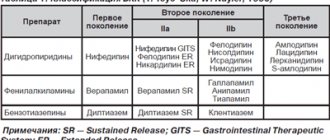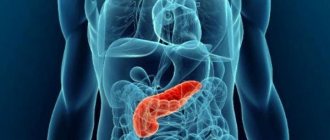1.What is neuropathic pain?
Neuropathic pain, or neuropathic pain as it is also called, is complex chronic pain that is usually accompanied by tissue damage.
With neuropathic pain, the nerve fibers themselves can be damaged. Because of this, injured nerve fibers send incorrect signals to pain centers. In addition, due to injury, nerve function can be disrupted both in the area of injury and in surrounding areas.
One example of neuropathic pain is phantom syndrome, or phantom syndrome.
. This rare condition occurs when an arm or leg is amputated due to disease or injury, but the brain still receives signals of pain in the amputated part of the body and senses the limb and its apparent movement.
A must read! Help with treatment and hospitalization!
Chronic pain as an independent disease
G.A.Grechin, neurologist
A person’s ability to experience pain is an extremely important, evolutionarily developed protective mechanism, ultimately leading to learning, adaptation and survival in changing environmental conditions. Pain not only informs about tissue damage, but also triggers reflex and behavioral responses that allow the damaging effects to be minimized and avoided.
In case of tissue damage, acute pain occurs, which should completely regress after healing, and often stop even before the tissue is restored. In the case of chronic pathology, pain can also become chronic. It's clear. However, in some cases, pain persists or worsens after healing, or appears clearly for the first time after healing. How to explain this?
One of the divisions of pain is nociceptive (receptor) and neuropathic.
Nociceptive pain occurs when nociceptors (i.e. pain receptors) in tissues are stimulated. The main treatments for such pain are non-narcotic analgesics and non-steroidal (non-hormonal) anti-inflammatory drugs. Steroid medications and sometimes narcotic analgesics may also be helpful. The goal of using these drugs is to turn off the irritation of pain receptors, and in the case of massive irritation of the receptors, to reduce the conduction of pain impulses along the pathways.
Rice. 1. Classification of pain by cause
Rice. 2. Types of pain
Another type of pain is neuropathic. This pain is associated with damage to the systems responsible for transmitting the pain signal, controlling and suppressing pain. These systems include: the nerves themselves, plexuses, spinal ganglia and spinal nerve roots, the spinal cord itself, especially its dorsal horns, pathways in the spinal cord and brain stem, nuclei of the brain stem and thalamus, related to the conduction and regulation of pain.
Damage options for these systems may include:
A. - gross mechanical destruction, compression, inflammation, ischemia, demyelination, axonal degeneration, a number of other causes (central or peripheral).
B. - an important role is played by changes in the neurophysiological characteristics of nerve fibers and groups of neurons related to pain beyond obvious gross morphological damage.
Fig.3. Symptoms of neuropathic pain
Fig.4. Characteristics of neuropathic pain
We can say that there are two types of neuropathic pain. One is associated with obvious structural damage to elements of the nervous system and can be observed in both acute and chronic diseases. The second option is not associated with gross structural damage to the nervous system. In this case, due to extremely strong or less pronounced, but long-term irritation of peripheral receptors or pathways and neurons, foci of stagnant excitation are formed in the central nervous system (especially in the dorsal horns of the spinal cord and in the thalamus of the brain), which exist chronically and are already are a generator of pain, which seems to “break away” from the primary focus. You can even say that this is an independent disease. In this case, peripheral tissue damage can either exist, persist for a long time, or end in recovery of this tissue.
Fig.6. The mechanism of formation of neuropathic pain
It is important that different patients may experience both nociceptive pain (receptor pain) and pure neuropathic pain, or there may be a combination of receptor and neuropathic pain in one patient with different proportions of these components. It should be especially noted that chronic neuropathic pain does not develop in all patients, other things being equal. Apparently, a known predisposition to the formation of chronic neuropathic pain is required. An important reason here will be the insufficient functioning of the body’s internal anti-pain system (congenital or acquired). This system normally suppresses excessive pain impulses. Treating neuropathic pain is challenging. Such pain requires long-term treatment. Moreover, the treatment is not analgesia, it is not temporary relief of pain, but rather treatment, the purpose of which, ideally, is to cure this type of pain or cure the neuropathic component of the pain condition. In the treatment of neuropathic pain, fundamentally different drugs are used than in the treatment of receptor pain. These are anticonvulsants and antidepressants.
Rice. 7. Treatment of chronic pain
Rice. 8. Differentiated treatment of pain
Anticonvulsants - drugs for the treatment of epilepsy - have taken a very important place in the treatment of neuropathic pain. Today they are the first choice drugs for such pain. Antidepressants are also widely used, and their analgesic effect develops independently of the antidepressant effect. Sometimes, if necessary, both groups of drugs are combined in one patient. Prescribing drugs from these groups helps reduce the manifestations of chronic pain or make these pains less emotionally significant, or even cure, in some cases, stagnant foci of neuronal excitation in the central nervous system, and therefore cure pain. It should be noted that treatment here requires cooperation and special patience of both the patient and the doctor.
Examples of the most common chronic neuropathic pain include:
- Postherpetic neuralgia;
- Classic trigeminal neuralgia;
- Painful form of diabetic neuropathy;
- Central neuropathic pain (after strokes, against the background of demyelinating and other diseases of the brain and spinal cord);
- Pain in chronic radicular syndromes due to herniated intervertebral discs and other pathological phenomena and processes in the spine;
- Less common are phantom pain (pain in a nonexistent limb after amputation).
Antidepressants may be used to treat another form of chronic pain. Here we mean the so-called masked depression. Thus, in some cases, patients experience a wide variety of pain and painful discomfort in various organs and systems. Patients have been unsuccessfully treated for years by doctors of various specialties, have a lot of diagnoses, but there is no result. Interestingly, the administration of antidepressants to such patients leads to the cessation of pain in some of them. A similar disorder, when signs of depression are practically undetectable or absent altogether, and in the foreground are pain and (or) phenomena that “simulate” a physical illness, is called masked depression. If the pain is pronounced, then this is an algic form of masked depression. In this case, pain can come from any (!) internal organs. Musculoskeletal pain of various localizations (of the above nature) are also observed.
In the treatment of chronic pain, acupuncture can also be successfully used as part of an integrated approach. Reflexology here is a tool for regulating and modulating a person’s own pain system (which uses the body’s own opiates - endorphins and enkephalins) for pain relief.
In some cases, the prescription of antidepressants and anticonvulsants to cancer patients on narcotic pain relief makes it possible to reduce the dose of opiates.
To identify the neuropathic nature of pain or the neuropathic component in the overall structure of pain, as well as to prescribe treatment, consultation with a specialist is required. We are ready to offer you such assistance.
*Glossary of terms:
CNS
– central nervous system (brain and spinal cord)
PNS
– peripheral nervous system
Somatic
– relating to the body
Visceral
– relating to internal organs
Steroids
– hormonal drugs
Opiates
– narcotic painkillers
NSAIDs
– non-hormonal anti-inflammatory drugs
Demyelination
– loss of the myelin sheath by the nerve fiber
Axocal degeneration
– destruction of the nerve fiber itself
Ischemia
– poor blood supply
The thalamus and dorsal horn of the spinal cord are important centers in the pain pathway
2. Causes of pain
There often seems to be no obvious cause for a patient's neuropathic pain. But doctors identify several types of common causes of such pain:
- Alcoholism;
- Amputation;
- Problems with the back, legs and hip area;
- Chemotherapy;
- Diabetes;
- Facial nerve problems;
- HIV infection or AIDS;
- Multiple sclerosis;
- Shingles;
- Spinal surgery.
Visit our Neurology page
Types of neuropathy
The types of neuropathy are determined depending on the number of nerves affected. If only one nerve is involved in the pathological process, they speak of mononeuropathy. This type of disease, compression-ischemic neuropathy, most often occurs in large nerve trunks - the femoral, sciatic, trigeminal or radiocarpal nerve. The pathology is relatively easy to diagnose; symptoms appear in the direction of the location of the nerve trunk in the tissues.
Another type is ischemic neuropathy, but it only affects the optic nerve. In fact, this is his heart attack, leading to a decrease in visual acuity, even to blindness. Separately, there is post-traumatic neuropathy, which occurs as a result of a fracture, compression of a limb, sprain or other injuries.
With polyneuropathy, entire groups of peripheral nerves are affected. The disease can occur simultaneously in several limbs, often symmetrically on different halves of the body, and is accompanied by a large number of symptoms. Depending on the causes, the following types of polyneuropathy are distinguished:
- metabolic – occur due to metabolic disorders, there are diabetic, uremic, hepatic;
- infectious-toxic – develop due to viral diseases (AIDS, leprosy, Lyme disease);
- toxic - nerve fibers are damaged by poisons, heavy metals, alcohol, possible with an overdose of medications;
- hereditary - it includes inherited genetic diseases and syndromes: Refsum's disease, Roussy-Levi syndrome, Charcot-Marie-Tutte amyotrophy;
- nutritional – occur in people with malnutrition and a deficiency of certain vitamins;
- autoimmune - are formed when the immune system attacks its own nerve fibers, these include Miller-Flesher syndrome, paraneoplastic neuropathies in cancer, paraproteinemic polyneuropathies.
Neuropathies are divided into several types, depending on the nature of the damage to the nerve trunk. They can be axonal, when the inner part of the nerve is damaged, and demyelinating, in which the sheath is destroyed and the transmission of the nerve impulse is disrupted.
3. Symptoms and diagnosis
Symptoms of neuropathic pain
Signs of neuropathic pain usually include shooting sensations, burning pain, as well as tingling and numbness in the affected parts of the body.
Diagnosis of neuropathic pain
A physical examination is required to diagnose neuropathic pain.
.
During it, the doctor will ask you how you can describe your pain, when it occurs, and whether the pain is associated with any specific causes and factors. The doctor may also ask you for blood tests and nervous system test results.
About our clinic Chistye Prudy metro station Medintercom page!











